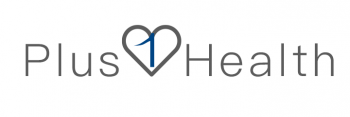In clinical situations, cardiac function is mainly represented by cardiac output, and this variable has two determinants, heart rate and cardiac output. The increase or maintenance of cardiac output is determined by a change in one or both of these two variables.
In the case of reduced new functions, these mechanisms are activated through some neural and humoral pathways to maintain adequate perfusion pressure in peripheral organs, especially the brain and kidney. Therefore, patients with heart failure often present with compensatory tachycardia, which can ensure adequate cardiac output when the cardiac function is still compensated, but the blood output per stroke is also reduced due to reduced venous return. Tachycardia cannot compensate for cardiac function indefinitely, and may even lead to worsening of heart failure, manifested as decreased systolic or diastolic function, mainly due to increased myocardial oxygen consumption and decreased myocardial perfusion during diastole and diastole. The tachycardia itself can also lead to myocardial damage, thereby exacerbating the worsening of heart failure.
Heart failure is the terminal stage of various cardiovascular diseases, and an increased heart rate is an independent risk factor for cardiovascular diseases. It has been reported that if the heart rate does not increase by 5 beats/min, the periarterial poplar sclerosis score will increase by 0.21, and the stenotic heart rate will increase by 0.21. The progression score increased by 0.27. The association of resting heart rate with periarterial poplar sclerosis was independent of other major risk factors and manifested in the general population, the elderly, hypertensive populations, myocardial infarction, or patients with heart failure. Individuals with increased heart rate tend to aggregate other risk factors, so individuals with increased heart rate are susceptible to cardiovascular disease.
Heart rate is a plausible therapeutic target for heart failure. Reducing the heart rate can improve the force-frequency relationship and increase myocardial contractility; slowing the heart rate can prolong the diastolic period, contributing to the increase of myocardial perfusion and the output per stroke; it can also increase the coronary perfusion time and reduce the oxygen demand of the myocardium. These all contribute to the improvement of cardiac function in patients with heart failure. Beta-blocker therapy reduces mortality by 35% and corresponds to a reduction in the patient’s heart rate of 10-15 beats per minute. A study of carvedilol in the treatment of heart failure showed that patients with a baseline heart rate >82 beats per minute had the most significant reduction in mortality, regardless of the etiology of heart failure. The association of slow or decreased heart rate with a reduction in clinical events was not limited to beta-blocker therapy. The GESICA study of low-dose amiodarone in patients with severe heart failure resulted in a 28% reduction in all-cause mortality at 2 years. In the treatment group, the subsidized baseline resting heart rate fatality rate was similar, showing that the faster the starting resting heart rate, the better the patient’s survival rate, the greater the benefit.
For patients with heart failure, the principle of coupled heart rate control is to try to reduce the heart rate to the slowest heart rate that can be tolerated. The resting heart rate of patients with sinus rhythm is not less than 55 beats/min, and the resting heart rate of patients with atrial fibrillation is not less than 80 beats/min, heart rate does not exceed 110 beats /min after activity.
Elderly patients with heart failure often have atrioventricular block. When giving beta-blockers, digitalis and other treatments to control heart rate and improve new functions, more attention should be paid to monitoring heart rate to avoid serious bradycardia and even cardiac stop.
Plus1Health has a sleep recorder, which can continuously monitor for a long time, monitor heart rate and breathing rate, and automatically generate sleep reports and analysis.
There is also a free heart rate app “Heart Rate“:
Heart Rate Monitor-Plus1Health on the App Store (apple.com).
